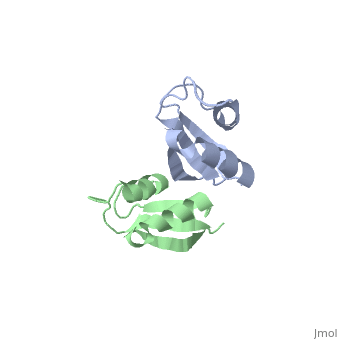1bxy
From Proteopedia
| Line 7: | Line 7: | ||
|ACTIVITY= | |ACTIVITY= | ||
|GENE= RPL30 ([http://www.ncbi.nlm.nih.gov/Taxonomy/Browser/wwwtax.cgi?mode=Info&srchmode=5&id=274 Thermus thermophilus]) | |GENE= RPL30 ([http://www.ncbi.nlm.nih.gov/Taxonomy/Browser/wwwtax.cgi?mode=Info&srchmode=5&id=274 Thermus thermophilus]) | ||
| + | |DOMAIN= | ||
| + | |RELATEDENTRY= | ||
| + | |RESOURCES=<span class='plainlinks'>[http://oca.weizmann.ac.il/oca-docs/fgij/fg.htm?mol=1bxy FirstGlance], [http://oca.weizmann.ac.il/oca-bin/ocaids?id=1bxy OCA], [http://www.ebi.ac.uk/pdbsum/1bxy PDBsum], [http://www.rcsb.org/pdb/explore.do?structureId=1bxy RCSB]</span> | ||
}} | }} | ||
| Line 33: | Line 36: | ||
[[Category: x-ray crystallography]] | [[Category: x-ray crystallography]] | ||
| - | ''Page seeded by [http://oca.weizmann.ac.il/oca OCA ] on | + | ''Page seeded by [http://oca.weizmann.ac.il/oca OCA ] on Sun Mar 30 19:10:33 2008'' |
Revision as of 16:10, 30 March 2008
| |||||||
| , resolution 1.9Å | |||||||
|---|---|---|---|---|---|---|---|
| Gene: | RPL30 (Thermus thermophilus) | ||||||
| Resources: | FirstGlance, OCA, PDBsum, RCSB | ||||||
| Coordinates: | save as pdb, mmCIF, xml | ||||||
CRYSTAL STRUCTURE OF RIBOSOMAL PROTEIN L30 FROM THERMUS THERMOPHILUS AT 1.9 A RESOLUTION: CONFORMATIONAL FLEXIBILITY OF THE MOLECULE.
Overview
The crystal structure of ribosomal protein L30 from the extreme thermophilic bacterium Thermus thermophilus has been determined at 1. 9 A resolution. The crystals are trigonal and belong to space group P3(2)21, with unit-cell parameters a = b = 63.5, c = 77.8 A, alpha = beta = 90, gamma = 120 degrees and two molecules per asymmetric unit. The structure was solved by the molecular-replacement method with AMoRe and refined with X-PLOR to an R value of 20.3% and an R(free) of 25.3% in the resolution range 8-1.9 A. Detailed analyses of the structures of the two molecules in the asymmetric unit and comparison of T. thermophilus L30 structure with the structure of homologous L30 from Bacillus stearothermophilus reveal two flexible regions at opposite ends of the rather elongated molecule. Such flexibility could be important for the protein fitting in the ribosome. A comparison with B. stearothermophilus L30 shows a higher number of salt bridges and unbound positively charged residues and an increased accessible hydrophobic area on the surface of T. thermophilus L30. This could contribute to the stability of both the extreme thermophile protein and the ribosome as a whole.
About this Structure
1BXY is a Single protein structure of sequence from Thermus thermophilus. Full crystallographic information is available from OCA.
Reference
Structure of ribosomal protein L30 from Thermus thermophilus at 1.9 A resolution: conformational flexibility of the molecule., Fedorov R, Nevskaya N, Khairullina A, Tishchenko S, Mikhailov A, Garber M, Nikonov S, Acta Crystallogr D Biol Crystallogr. 1999 Nov;55(Pt 11):1827-33. PMID:10531479
Page seeded by OCA on Sun Mar 30 19:10:33 2008

